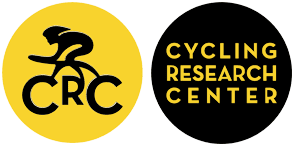Acute effect of foot orthotics on drag area and perceived comfort in cyclists affected by an anatomic asymmetry in time trial position
DOI:
https://doi.org/10.28985/0620.jsc.01Keywords:
Pelvis Tilt, Foot Orthotics, Aerodynamic Drag, Time Trial, CyclingAbstract
The aim of this study was to analyse the acute effect of biomechanical foot orthotics on drag area (ACd) and perceived comfort in elite cyclists affected by a lower limb length inequality (LLLI) in TT position. Twenty-nine cyclists performed two discontinuous incremental exercises (before and after orthopaedic correction) using their personal TT bicycle and equipment on a 250-m indoor velodrome. The ACd was unchanged in both the test group (TG) (‑0.5%, p = 0.707) and the control group (CG) (-1.4%, p = 0.276), whereas the perceived comfort was improved in the TG (+6.2%, p = 0.002) and stabilised in the CG (+0.7%, p = 0.546), after the fitting of the foot orthotics. Pelvis movements were decreased (small effect size) in the TG (-6.2%, p = 0.093, ES = 0.251), whereas they were increased (small effect size) in the CG (+5.2%, p= 0.159, ES = 0.215). TT position was slightly improved by compensating for a LLLI, as the ACd was stabilised and the level of comfort was improved. Thus, cyclists affected by a LLLI are recommended to compensate with foot orthotics in order to improve their level of comfort and consequently their performance in TT position.
Downloads
Published
How to Cite
Issue
Section
Copyright (c) 2020 Journal of Science and Cycling

This work is licensed under a Creative Commons Attribution-NonCommercial 4.0 International License.
Authors contributing to Journal of Science and Cycling agree to publish their articles under a Creative Commons CC BY-NC-ND license, allowing third parties to copy and redistribute the material in any medium or format, and to remix, transform, and build upon the material, for any purpose, even commercially, under the condition that appropriate credit is given, that a link to the license is provided, and that you indicate if changes were made. You may do so in any reasonable manner, but not in any way that suggests the licensor endorses you or your use.
Authors retain copyright of their work, with first publication rights granted to Cycling Research Center.






